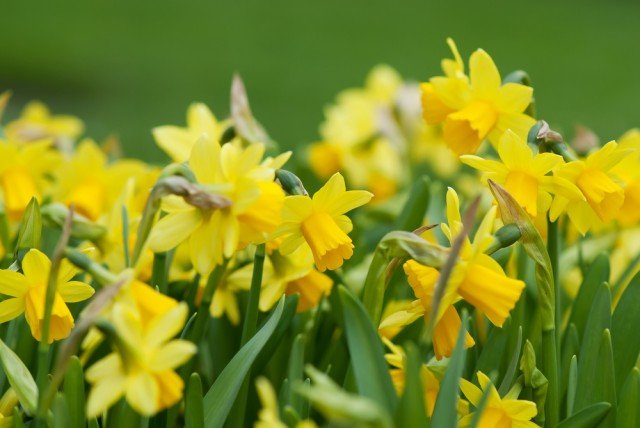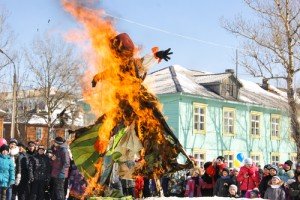
By Teri Weiss
March, the third month of the western or Gregorian calendar, is named for Mars, the Roman god of war – and earlier also vegetation and fertility. Often called the “loud or stormy month,” it is also the time of the vernal equinox, the official start of spring.
Old German almanacs used to refer to March as “Lenzmond,” “Lenzing” or “Frühlingsmond,” spring moon or month, when “slowly nature awakens, flowers begin to bloom, shrubs, bushes and trees sprout buds and migrating birds return from the south.”
Appropriately enough, the flower for the month of March is the Jonquil, or daffodil, a bright yellow, cheerful spring blossom.
The proverb, ”March comes in like a lion, and goes out like a lamb” has been passed down for many generations. Scholars trace it back to centuries-old agricultural customs and to sturdy tillers of the soil who always had to rely on climate observations to forecast or “guesstimate” their own weather. Early spring was often marked by freezing cold and belated winter storms, i.e., started with a lion’s roar. But by the second half of March, the weather usually turns warmer, spring-like and docile, like a gentle lamb.
The German version, the old “Bauernregel“ or peasant’s saying states the proverb in similar words: “Der März soll kommen wie ein Wolf und gehen wie ein Lamm,“ meaning March comes in like a wolf and goes out like a lamb.
Perhaps it’s best to just take the proverbial saying at face value. In any case, winter is burned in effigy at a popular German spring celebration.

This year on March 6, which is the fourth Sunday of Lent, three weeks before Easter, various towns of Northern Baden-Württemberg, located on and near the Neckar River, such as Heidelberg, Mannheim, Weinheim , Speyer, Hockenheim, etc. will celebrate a more than 500-years old custom, the traditional “greeting spring and bidding farewell to winter” festivity, called “Sommertagszug,” or Summer Day procession.
Children parade through the streets with sticks adorned with colorful ribbons topped with pretzels and boiled eggs until they reach the market square, where dancers costumed as “Winter” and “Spring” fight it out on a stage. Spring wins, of course, and finally a straw or paper effigy of winter is burned. The pretzels and eggs are given to onlookers. Spring is now considered to have officially arrived.
The best known and certainly the most popular holiday in March is St. Patrick’s Day, March 17. All over the world, including in Germany, it is celebrated with marches and parades. And in Stuttgart too, there are numerous “wearers of the green” of all nationalities sure to raise a cup of cheer or two.
Let’s see whether the old proverb about March is true, or whether lion (or wolf) and lamb reverse their timing. Better bundle up, just in case, until April.
Sommertagszug in Baden-Württemberg 2016
With the affordable and convenient day ticket through the Bahn office or website for the province of Baden-Württemberg, you can travel on all local and regional trains with up to four additional passengers in one group ticket starting at under 30 euro to visit new cities such as those mentioned below. Baden-Württemberg-Ticket.
Heidelberg March 6 at 3 p.m. at Altstadt Bismarckplatz 60115.
Parade from the St. Anna Gasse to the market place. For more about Heidelberg, visit http://www.heidelberg-marketing.de/
Weinheim March 6 at 2 p.m. at the marketplace, 69469.
Join the traditional procession for the expulsion of the winter. The highlight is the symbolic burning of the snowman. More about Weinheim , visit www.weinheim-marketing.de.
Heiligkreuzsteinach March 6 at 1:30 p.m. Karl-Fire-Place Rathausstraße, 69253.
Colourful parade through the town. For more about the city, visit www.heiligkreuzsteinach.de.
See the parade go through the streets, followed by incineration of the winter. More about Heddesheim visit, www.heddesheim.de.
Bruchsal May 8 at 2:15 p.m. downtown on Kaiserstraße, 76646.
The medieval folk custom of winter expulsion was revived a century ago in Bruchsal: A cheerful spring migration with many young participants from schools, kindergartens and clubs moving through the streets with colored paper wrapped sticks, pretzels and eggs as the obligatory symbols which symbolize the victory of summer through the cold of winter since ancient times. On a team of horses, a snowman is burned in the courtyard at the end. A must is to learn the traditional song: “Strih, Strah, Stroh, der Sommerdag isch do.” More about Bruchsal visit, www.bruchsal-erleben.de.
Source and additional cities below from www.veranstaltung-baden-wuerttemberg.de
- Ladenburg: 6 March 2016 at 1400
- Mosbach: 6 March 2016 at 1430
- Heidelberg-Handschusheim: 13 March 2016
- Heidelberg-Ziegelhausen: 13 March 2016
- Hockenheim: 13 March 2016 at 1400
- Bammertal: 13 March 2016 at 1330
- Edingen-Neckarhausen: 13 March 2016 at 1330
- Hirschberg: 20 March 2016 at 1430
- Mannheim, Luisenpark: 20 March 2016 at 1430
- Hemsbach: 21 March 2016 at 1430
- Schwetzingen: April 9 2016 at 1400
- Eppelheim: 10 April at 1400
- Gauangelloch: 24 April 2016
